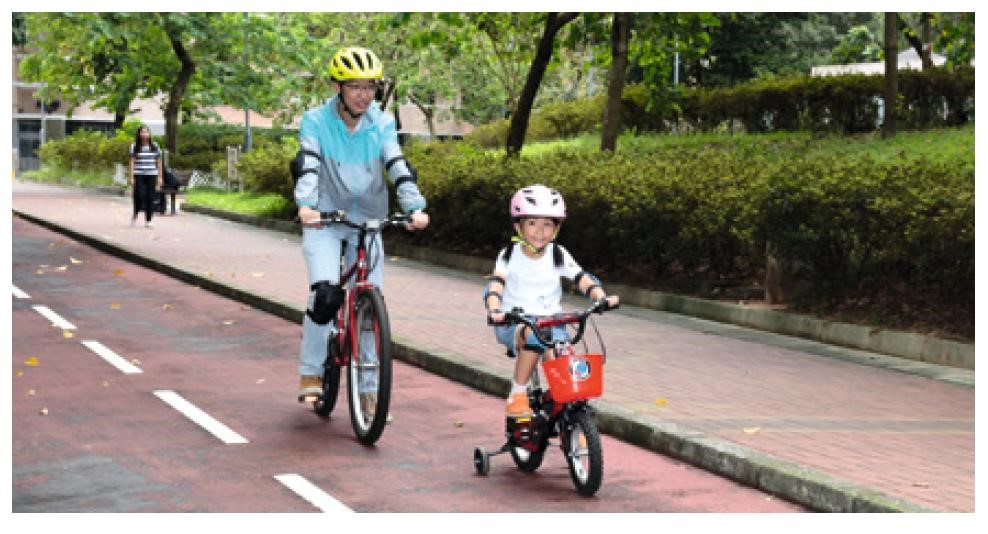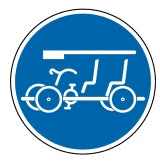Do not allow young children out alone on the road. Always go with them. If you cannot go, ask another adult to go with them. You should always hold their hands and walk between them and the traffic whenever you are on or near a road or pavement. If you cannot do this, use reins or secure them firmly in a pushchair or carry them. Do not let them run onto the road.
Children up to the age of 11 (those before secondary school age) should still be supervised on the roads, particularly the younger ones. You must hold their hands when crossing the road. If they must go on their own, tell them not to cross unless all the traffic from any direction has stopped or there is no traffic in sight. Do not allow them to make a journey unless they can cope with any dangers they might encounter.
Allow them plenty of time for their journey so they do not need to hurry, particularly when going to school. Try to ensure that they do not forget anything, as a worried or hurrying child may not take care.
You should set a good example when with children by following the Road Users' Code carefully and clearly so that they will learn the correct and safe way to use the road. For example, you should teach your children how to apply the Road Crossing Code properly to cross the road.
When using a pushchair, keep it away from the kerb particularly when waiting to cross a road, even though it may be more difficult to see if anything is coming. Before you cross to an island, make sure it has enough space for both you and the pushchair. If it is not, cross the whole road in one go when it is safe to do so.
You should allow children to play only in safe areas. Do not allow them to play on the roadway or the pavement. Do not allow them to play where they can easily reach a road or pavement, or where there is likelihood of moving or parked vehicles. Do not allow them to carry out any other activities, such as eating, drinking, playing mobile games, using a mobile phone, listening to any audio device or talking, when crossing the roads.
Never wait for children on the other side of the road, for example when they are leaving school or a bus. Children, excited to see you, may dash across without following the Road Crossing Code properly.
When getting in or out of vehicles, let children get in first and get out last. When you are dropping off a child alone, wherever possible stop at a location where the child will not have to cross the road.
Children as cyclists
You must not allow children under the age of 11 to cycle on a road without adult supervision.
Children should be advised to ride on cycle tracks and keep away from vehicular traffic.
Do not allow any children to cycle on the road until they have gained the skills to ride competently and safely, fully understood the driving rules, and are prepared to use and share the road with other road users.
You should also ensure that your children have put on suitable personal protective equipment, and the cycles suit their physical condition and are properly maintained (also see Chapter 4 'For Cyclists' on rules and advice for cyclists).
|
Riding of multi-cycles is restricted to certain designated areas and cycle tracks as indicated by the sign above. A child under the age of 11 must be accompanied by an adult so as to ride or steer a multi-cycle in these places. |
 |
|
Teaching children the Road Crossing Code The Road Crossing Code is a guide for all pedestrians. However, children need to be taught how to use it and should not be allowed to go out alone until they can fully understand and apply it correctly. The age at which they can apply the Road Crossing Code will vary; for instance, many children cannot fully understand and apply those parts of the Code requiring judgement of speed and distance of approaching vehicles. Teaching children the Road Crossing Code, and the age at which parents allow them to go out and cross roads by themselves, should therefore be suited to the abilities of each child. (For a full explanation of the Road Crossing Code and how to apply it in different road and traffic situations, see pages 8 to 20.) |
Child safety in private cars
Children are more vulnerable in crashes. The best way to protect them from the impact of a crash is to put them in the rear seats and in suitable restraints (see page 45 for more details of the use of seat belt and child restraining devices). This will stop them from being thrown around or out of the car.
If you are the driver, it is your responsibility to ensure that all passengers are belted up. For children, you have to ensure (a) any front seat passenger under the age of 3 is securely fastened to the seat by means of an approved restraint for children (equally applies if the child passenger sits in the rear and such restraining device is available for use); and (b) any front seat or rear seat passenger of or over 3 years of age but under 15 years old must wear a seat belt (or a body restraining seat belt or a lap belt or a restraining device for a young person) if such seat belt is available for use. Such seat belt must be secured to anchorage points of the vehicle other than on the seat itself.
You must not hold a child in your arms or allow the child to sit on your lap when you are sitting in the front passenger seat. In an accident, the child can be crushed between you and the vehicle dashboard or thrown out of the vehicle.
If children are in someone else's car or if you are carrying a lot of children, suitable child restraints may not be available. In that case, children should wear seat belts rather than not be restrained at all.
|
Young children should be placed in the rear seats and restraining devices appropriate to their age and size should be used (see further information on page 45). |
 Riding multi-cycles
Riding multi-cycles